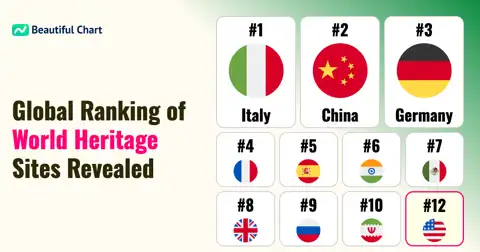The landscape of Major League Baseball has been profoundly shaped by exceptional power hitters, particularly since 1970. This compilation highlights the most prolific home run hitters who have left an indelible mark on the sport, showcasing their remarkable longevity and strength at the plate. These athletes redefined offensive standards, consistently challenging pitching prowess with their ability to drive the ball out of the park. Their sustained performance places them at the pinnacle of baseball's power elite.

A home run in baseball occurs when a batter hits the ball in such a way that they can circle all the bases and score a run, without any errors by the fielding team. Most commonly, this involves hitting the ball out of the field of play in fair territory, typically over the outfield fence.
The post-1970 era in Major League Baseball has witnessed a dramatic evolution in offensive play, characterized by a significant surge in home run production. This period saw the rise of athletes whose physical conditioning, hitting mechanics, and strategic approaches redefined what was possible at the plate. Unlike earlier eras, where pitching and small ball often dominated, the game gradually shifted towards a power-hitting spectacle, drawing larger audiences and influencing player development from the ground up.
Several factors contributed to this transformation. Advancements in sports science, including nutrition, strength training, and injury prevention, allowed players to maintain peak physical performance for longer careers. This extended longevity meant more plate appearances and, consequently, more opportunities to accumulate home runs. Furthermore, refined batting techniques, often emphasizing launch angle and exit velocity, became more prevalent, maximizing the potential for extra-base hits and home runs. The analytics revolution in baseball provided hitters with unprecedented insights into their swing mechanics and opposing pitchers' tendencies, enabling them to make more informed adjustments.
The design of ballparks also played a role. While some classic stadiums maintained their challenging dimensions, many new or renovated ballparks were constructed with features that could be more conducive to home runs, such as shorter outfield fences or specific wind patterns. The composition and construction of the baseball itself have also been subjects of perennial discussion, with some speculating about its influence on offensive numbers. While official specifications remain consistent, subtle variations are often debated.
Beyond individual player attributes and external factors, the overall strategic philosophy of baseball teams evolved. A greater emphasis on offense, particularly power hitting, began to pervade team construction. General managers and coaches increasingly valued players who could change the game with a single swing, leading to a premium on slugging ability. This shift encouraged a more aggressive approach at the plate, with hitters often looking to drive the ball for distance rather than simply making contact.
The careers of the top home run hitters from this era exemplify these trends. Many developed comprehensive offensive games, combining raw power with plate discipline and an acute understanding of situational hitting. Their ability to hit for power against diverse pitching styles and in various ballparks underscored their adaptability and exceptional skill. The cumulative nature of their home run totals speaks volumes about their consistency and ability to perform at an elite level over many years. This era, therefore, represents a golden age of power hitting, leaving an indelible mark on baseball's statistical records and fan experience.
Key Takeaways
Enduring Power and Longevity
- Elite home run hitters of the post-1970 era demonstrated remarkable power combined with exceptional career longevity.
- Players like Barry Bonds and Albert Pujols maintained high performance levels over two decades, accumulating unparalleled home run totals.
- Their ability to stay competitive and productive year after year highlights significant advancements in player conditioning and sustained athleticism.
The Impact of the Modern Hitting Era
- The period after 1970 saw a shift towards a more power-centric offensive strategy in MLB.
- This era was influenced by evolving training methods, nutritional science, and potentially changes in equipment or ballpark dimensions.
- The rise of advanced analytics further refined hitting approaches, enabling batters to maximize their power potential.
Legendary Figures Redefining Milestones
- The top of the home run list features players who set new benchmarks for power hitting.
- Barry Bonds' 762 career home runs established a record that underscores an era of extraordinary offensive output.
- These players not only achieved individual milestones but also significantly shaped the competitive landscape of their respective decades.
Top Ranking
1st Barry Bonds (762 HR)
Barry Bonds stands as the all-time home run king, amassing an incredible 762 career blasts. A left fielder primarily for the Pittsburgh Pirates and San Francisco Giants, Bonds combined unparalleled plate discipline with formidable power. His career spanned from 1986 to 2007, culminating in an era-defining display of offensive prowess. Bonds led the league in home runs multiple times, including a record-setting 73 in the 2001 season, solidifying his place as one of baseball's most dominant and controversial figures.
2nd Albert Pujols (703 HR)
Albert Pujols, known as 'The Machine,' finished his illustrious career with 703 home runs, a testament to his consistent power and longevity. Playing mostly for the St. Louis Cardinals and Los Angeles Angels, Pujols was a feared right-handed slugger from 2001 to 2022. He was a perennial MVP candidate in his prime, celebrated for his ability to hit for both average and prodigious power. His consistent excellence across decades made him one of the most respected hitters of his generation.
3rd Alex Rodriguez (696 HR)
Alex Rodriguez, a dynamic shortstop and third baseman, concluded his career with 696 home runs. Playing for the Seattle Mariners, Texas Rangers, and New York Yankees from 1994 to 2016, Rodriguez was a five-tool player who transitioned from a young sensation to a power-hitting superstar. His impressive home run totals, often achieved with high batting averages, showcased his exceptional talent. Despite controversies, his statistical achievements remain among the most significant in modern baseball.
4th Ken Griffey Jr. (630 HR)
Ken Griffey Jr. captivated fans with his smooth left-handed swing and iconic backwards cap, accumulating 630 career home runs. A center fielder for the Seattle Mariners and Cincinnati Reds, among others, from 1989 to 2010, Griffey was renowned for his effortless power and defensive brilliance. His graceful play and numerous highlight-reel catches made him one of the most beloved players of his era. Griffey's career was a blend of immense talent and a pure love for the game.
5th Jim Thome (612 HR)
Jim Thome, a towering first baseman and designated hitter, hit 612 home runs over a career spanning from 1991 to 2012. Known for his powerful left-handed swing and disciplined approach at the plate, Thome played for teams like the Cleveland Indians, Philadelphia Phillies, and Chicago White Sox. He consistently ranked among league leaders in home runs and walks, showcasing a rare combination of power and patience. Thome's approachable demeanor and thunderous bat earned him widespread admiration.
| Rank | Name | Indicator |
|---|---|---|
1 | 762 | |
2 | 703 | |
3 | 696 | |
4 | 630 | |
5 | 612 | |
6 | 609 | |
7 | 583 | |
8 | 569 | |
9 | 555 | |
10 | 548 | |
11 | 541 | |
12 | 521 | |
13 | 511 | |
14 | 509 | |
15 | 504 | |
16 | 493 | |
17 | 486 | |
18 | 477 | |
19 | 473 | |
20 | 468 |





